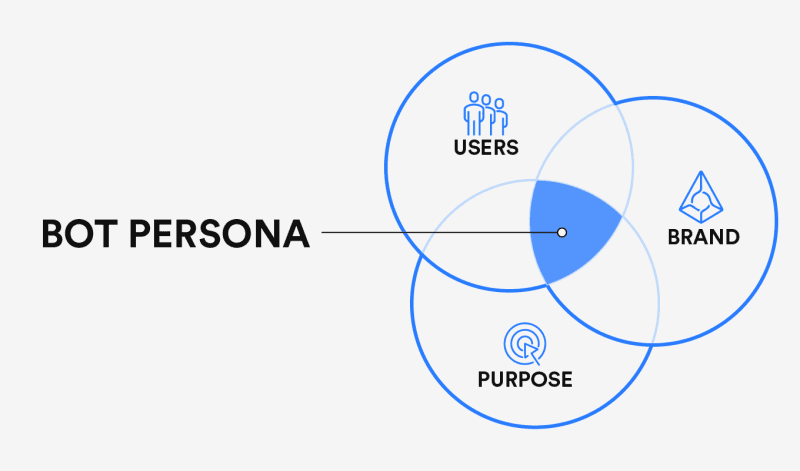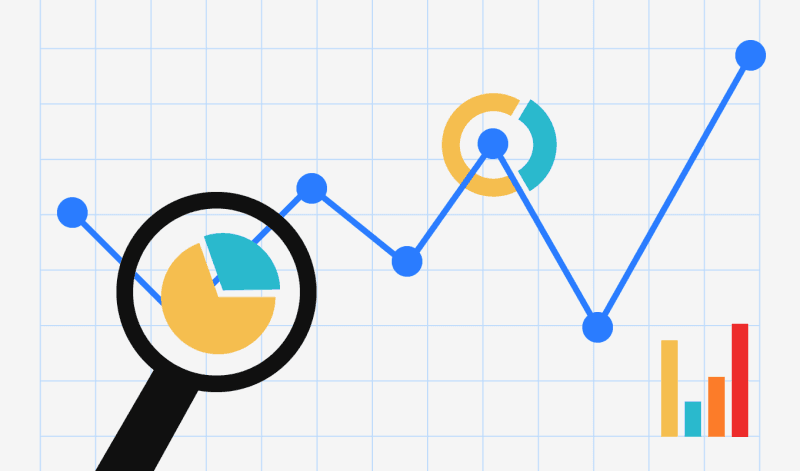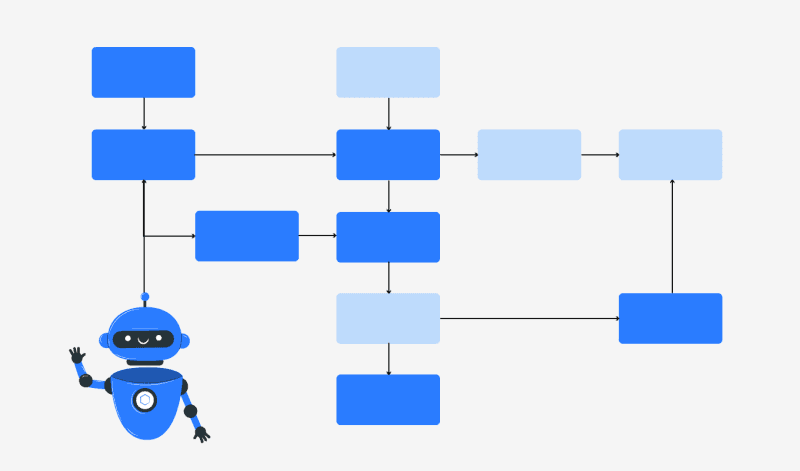7 min read
Everything You Need to Know About a Chatbot Designer
Bhavyadeep Sinh Rathod
January 4, 2023
From all the questions related to chatbot and AI assistants, the most frequently asked is, what is a chatbot designer? Or more precisely, who is a chatbot designer?
Just like digital designers, visual designers, or UX designers, chatbot designers design the chatbot conversational workflows that make chatbots more human-like when they interact with humans.
If you want to create a custom conversational experience using AI and human psychology, a chatbot designer, a human can help enhance your brand’s customer experience.
But how?
Let’s find out!
This article explains who a chatbot designer is, what they do, their skills, roles, and responsibilities, the cost of hiring, etc.
Who is a Chatbot Designer and What Do They Do?
A chatbot designer is a professional who creates and designs chatbots that are used for a variety of use cases, such as customer support, information dissemination, lead generation, and online sales.
They help to create a chatbot that is able to understand and respond to user input in a natural, human-like way. Chatbot designers also work with developers and UX design agencies to ensure that the chatbot is integrated seamlessly into the desired platform and functions properly.
As a chatbot designer, you would be responsible for creating and implementing the logic and flow of the conversation that the chatbot will have with users. This typically involves designing the chatbot's responses to various inputs, as well as creating any additional features or functionality that the chatbot may need.
You might also be responsible for the integration of the chatbot with other systems or platforms, such as social media or messaging apps like WhatsApp and Facebook, to ensure that it can effectively communicate with users.
Skill Set You Should Look for in a Chatbot Designer
Conversational user interfaces are a hot topic for every organization these days. For years organizations have tried to improve the user experience of customers by offering them personalized chatbot experiences.
Now with the help of technological advancements and professional chatbot designers, conversations are made easy, real, and more natural. In order to connect with customers, there are different qualities that a chatbot designer must hone. Let’s discuss a few of them in brief.
1. Natural Language Understanding
A chatbot doesn’t speak like humans. An AI-based chatbot can give a reply that is satisfactory, but it can never deliver dialogue that seems to be realistic and natural.
That’s where professional chatbot designers come into play. They frame polished dialogue that not only does the job of addressing the question but also shows empathy and concern toward the customer. The dialogues are brought to life by a strong character.
2. Understanding Persona
Building a strong character or persona is the second important skill set that every chatbot designer should master. Psychologically, whenever you hear a voice or hold a conversation with someone via chat, within 1 and a half second, you tend to perceive their age, gender, and educational level.

Same goes for bots too. Your bot persona should be decided keeping three thongs in mind:
Users
Brand
Purpose
Having a solid persona helps you build trust, holds authoritativeness during the conversation, and allows you to implement psychological principles for boosting the overall customer experience.
3. Understand the Scenario
For a chatbot designer, the most difficult aspect is to write a conversation. Writing a conversation is the same as writing a film or novel. Only when you overcome the obstacle the story seems to be complete. The same goes for the case of conversational writing.
As a chatbot designer, you need to not only understand the customer's pain point but also connect with them emotionally and provide a righteous solution to their problem. Being a chatbot designer, you need to master both rational and irrational components of conversation and design. As well as making it simple and easy for those who will be doing a job of chat moderator in the future.
For example, if a user is motivated, being a chatbot designer, you should possess the skill set for showing empathy and getting the desired solution as soon as possible. Already motivated users don’t need persuading. You should avoid making your conversation transactional. The focus should be on providing the solution.
However, in the case of not-so-motivated users, you need to stick with more persuasive conversation principles. Techniques like social proof, answering basic questions regarding the scenario, commitment, etc., can be beneficial to get your user in the right mindset for offering your services.
4. Learn Analytics and Optimization
If you think that the job of a chatbot designer is finished after designing a conversational user interface and putting it into a conversational framework, think again! The job role of a chatbot designer is not only to design conversations but also to analyze and optimize them based on analytics.

A chatbot designer needs to hone a specific skill set to identify design flaws, make pointers on how to improve it, iterate it and make it better with every passing day.
One key element that will assist with optimization is having lots of historical data. The more data, the more the chances of improvement.

But to deal with large sets of data can be overwhelming at times. As a chatbot designer, you need to know how to prioritize some things and discard junk data.
Roles and Responsibilities of a Chatbot Designer
1. Designing Conversation Flow
The main responsibility of a chatbot designer is to design the conversation flow of the chatbot. This involves determining the types of questions and responses that the chatbot will be able to handle, as well as the appropriate responses to those questions.

It is important for the chatbot designer to consider the user experience when designing the conversation flow, as a poorly designed chatbot can lead to a frustrating experience for the user.
Here’s the inspiration to design stunning conversational user interfaces.
2. Setting the Tone
In addition to designing the conversation flow, chatbot designers are also responsible for determining the appropriate tone and personality for the chatbot. This includes deciding on the chatbot's tone of voice, whether it should be more formal or casual, and how it should respond to different types of user input. You can even take it a step further by determining if you want your chatbot to resemble an Enneagram 6 personality type or embody the traits of an enthusiastic and spontaneous Enneagram 7.
It is important for the chatbot designer to consider the target audience of the chatbot when determining its tone and personality, as this can greatly impact the user's perception of the chatbot.
Additionally, they should consider deck design to clearly showcase the chatbot's features and functionalities to stakeholders and users.
3. Development and Implementation
In addition to these design-related responsibilities, chatbot designers are also often involved in the development and implementation of the chatbot. This can include working with developers to integrate the chatbot into a website or app, conducting integration testing and debugging the chatbot to ensure it is functioning properly.
4. Testing for Accuracy and Efficiency
One of the challenges that chatbot designers face is ensuring that the chatbot can effectively handle unexpected or unusual user inputs. It is important for the chatbot to be able to handle these types of inputs gracefully and provide appropriate responses rather than becoming confused or unable to continue the conversation.
How Much Does it Cost to Hire a Chatbot Designer?
The cost of hiring a chatbot designer can vary significantly depending on a number of factors, including the complexity of the chatbot, the designer's level of experience and expertise, and the location of the designer.
On average, you can expect to pay anywhere from $50 to $200 per hour for a chatbot designer. However, this price can go up or down depending on the project. For example, a simple chatbot with basic functionality may cost less than $50 per hour, while a more complex chatbot with advanced features may cost more than $200 per hour.
The cost of hiring a chatbot designer may also be affected by the designer's location. Designers in countries with lower labor costs may charge less than those in countries with higher labor costs.
Overall, the chatbot designer salary can vary widely, but you can expect to pay anywhere from $50 to $200 per hour for their services. It's important to carefully consider your budget and the scope of your project before hiring a chatbot designer to ensure that you get the best value for your money.
Parameters to Consider Before Hiring a Chatbot Designer
As businesses look to incorporate chatbots into their customer service strategies, they may consider hiring a chatbot designer to help build and maintain these AI-powered assistants. But what should they look for in a chatbot designer? Here are some key parameters to consider:
1. Technical Skills
A chatbot designer should have a strong foundation in computer science and programming, with experience in languages such as Python, Java, and C++. Taking an online Python course from DataCamp can be a great way to build or strengthen these skills. They should also be familiar with chatbot development companies.
2. UX Design Skills
A chatbot is essentially a software interface, so it's important for the designer to have a good understanding of user experience (UX) design. This includes knowing how to create intuitive and user-friendly conversation flows and designing visually appealing chatbot interfaces.
3. Industry Knowledge
It's helpful for a chatbot designer to have a background in the industry in which the chatbot will be used. For example, a designer with a background in e-commerce would have a better understanding of the specific needs and pain points of customers shopping online.
4. Communication Skills
Chatbot designers should be able to communicate their ideas and collaborate with a team clearly. They should also be able to explain technical concepts to non-technical stakeholders.
5. Creativity
Chatbots have the potential to revolutionize the way businesses communicate with customers, so it's important for designers to have a creative and innovative mindset. They should be able to think outside the box and come up with unique chatbot features and functions.
Overall, an ideal chatbot designer should have a combination of technical skills, UX design expertise, industry knowledge, strong communication abilities, and creativity. With these qualities, they will be well-equipped to build chatbots that effectively serve the needs of businesses and their customers. Studying resume examples from candidates who have worked in similar industries can guide recruiters in identifying the right fit.
What Does the Future Hold for Chatbot Designers
As chatbots become more widespread and advanced, the skills and expertise of chatbot designers will be in high demand. Those who are able to stay up-to-date with the latest chatbot trends and technologies in the field will have a strong competitive advantage in the job market.
With the pace by which today’s digital era is growing, in the next 5 to 6 years, it will be hard to imagine companies without chatbot designers.
Overall, the future looks bright!
So, that's great news if you are looking to start and establish your career as a chatbot designer.
For beginners, you can try building bots to get a knack of it and gain some confidence.
You can go to WotNot, which is unarguably the world’s easiest no-code bot builder.
Here, you can create a chatbot from scratch or modify the existing templates. You can also test and deploy to see how it works.
So, what are you waiting for? Sign Up and build your first bot on WotNot now!
ABOUT AUTHOR
Bhavyadeep Sinh Rathod
Content Editor, WotNot
He likes technology, chatbots, comedy, philosophy, and sports. He often cracks hilarious jokes and lightens everyone's mood in the team.






